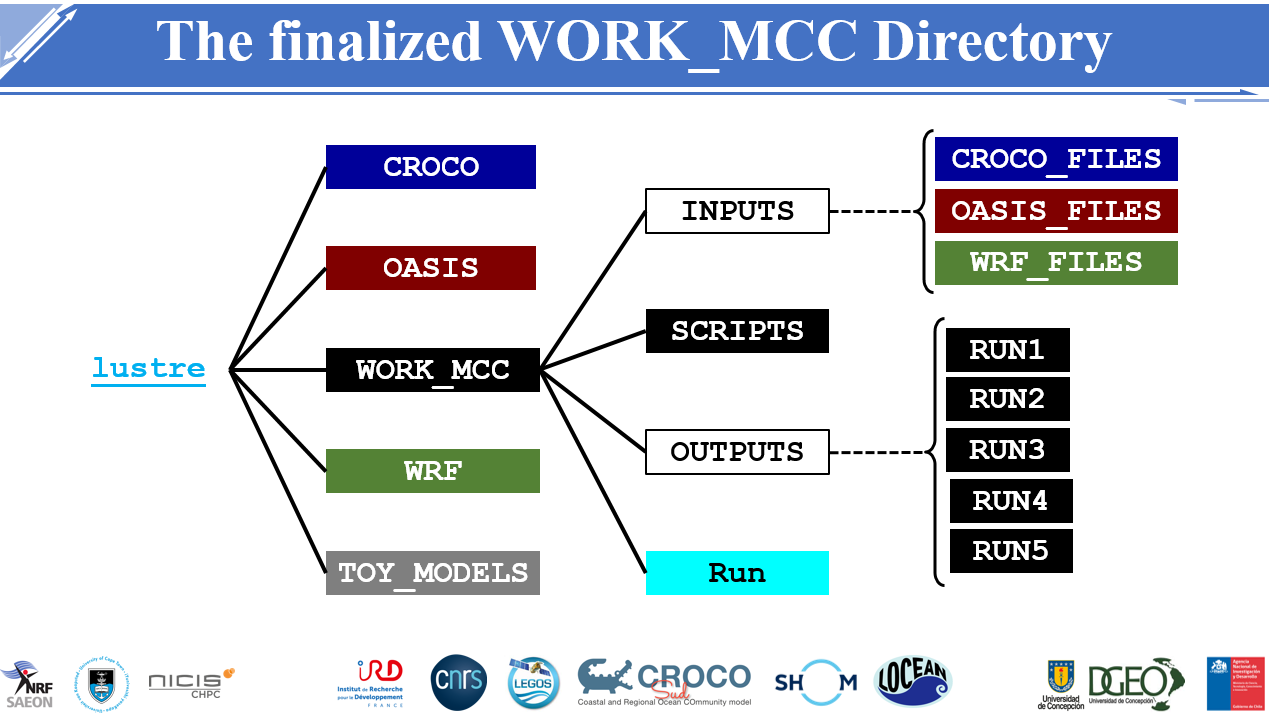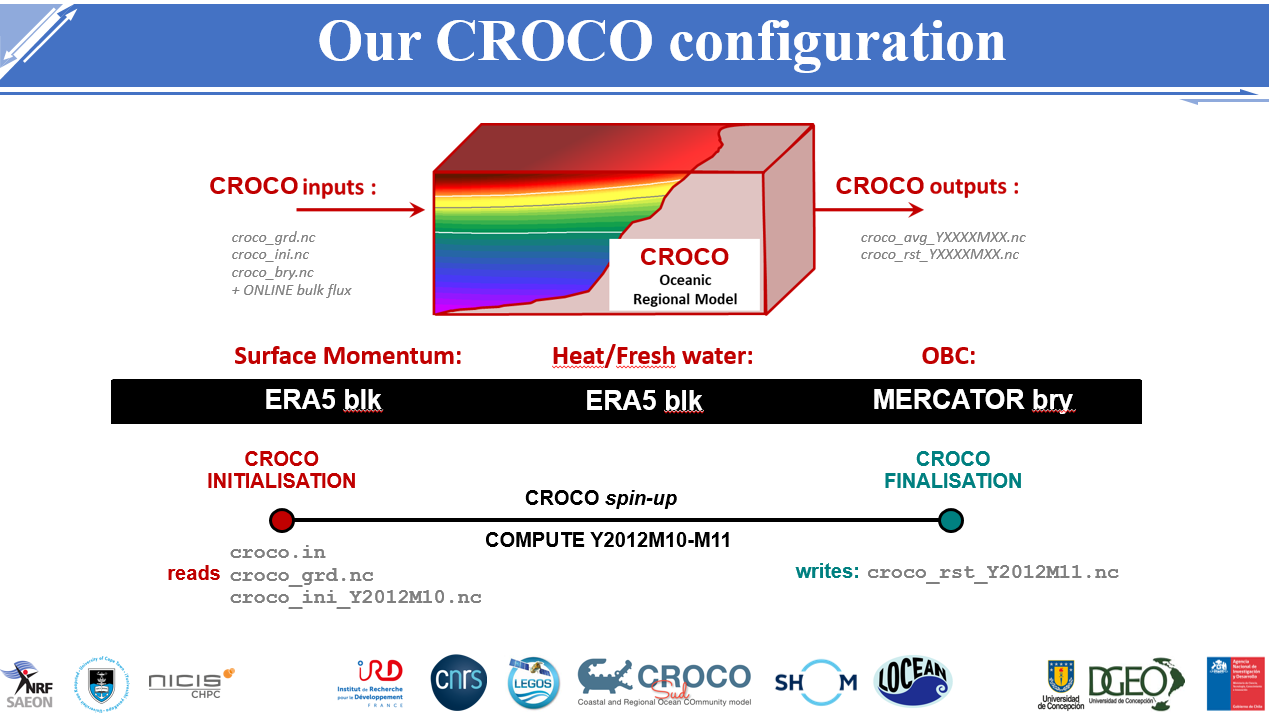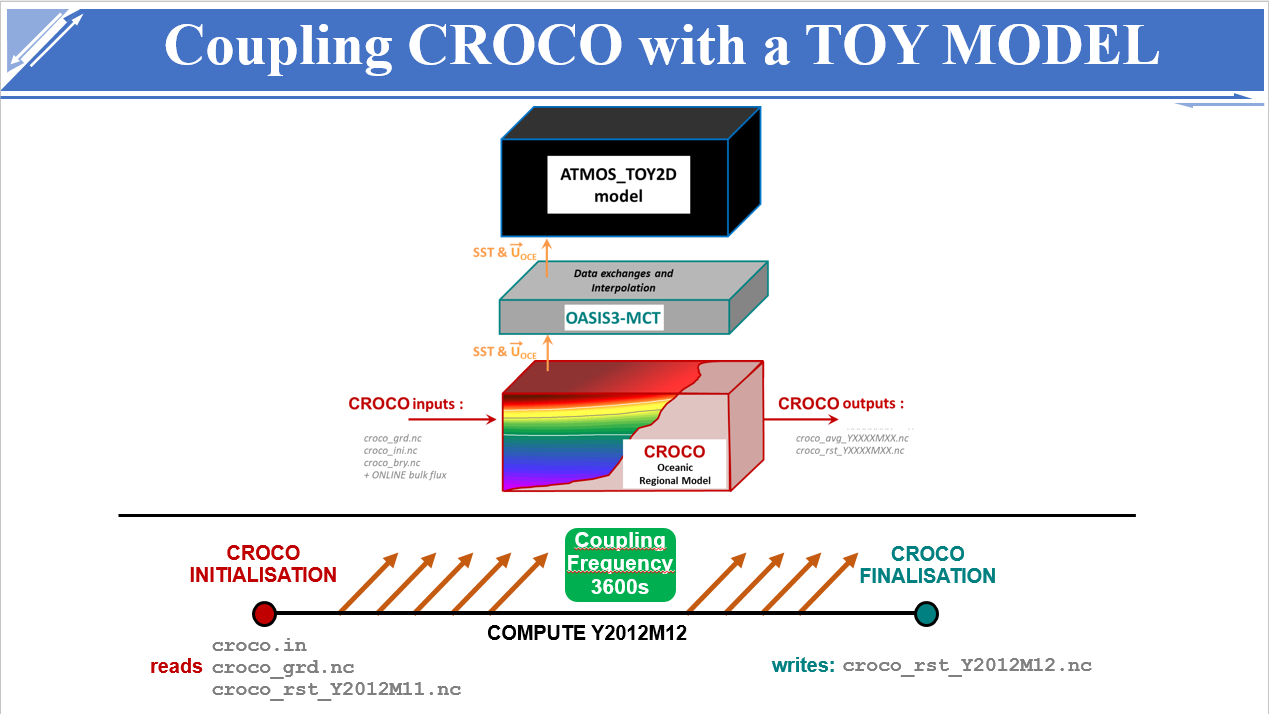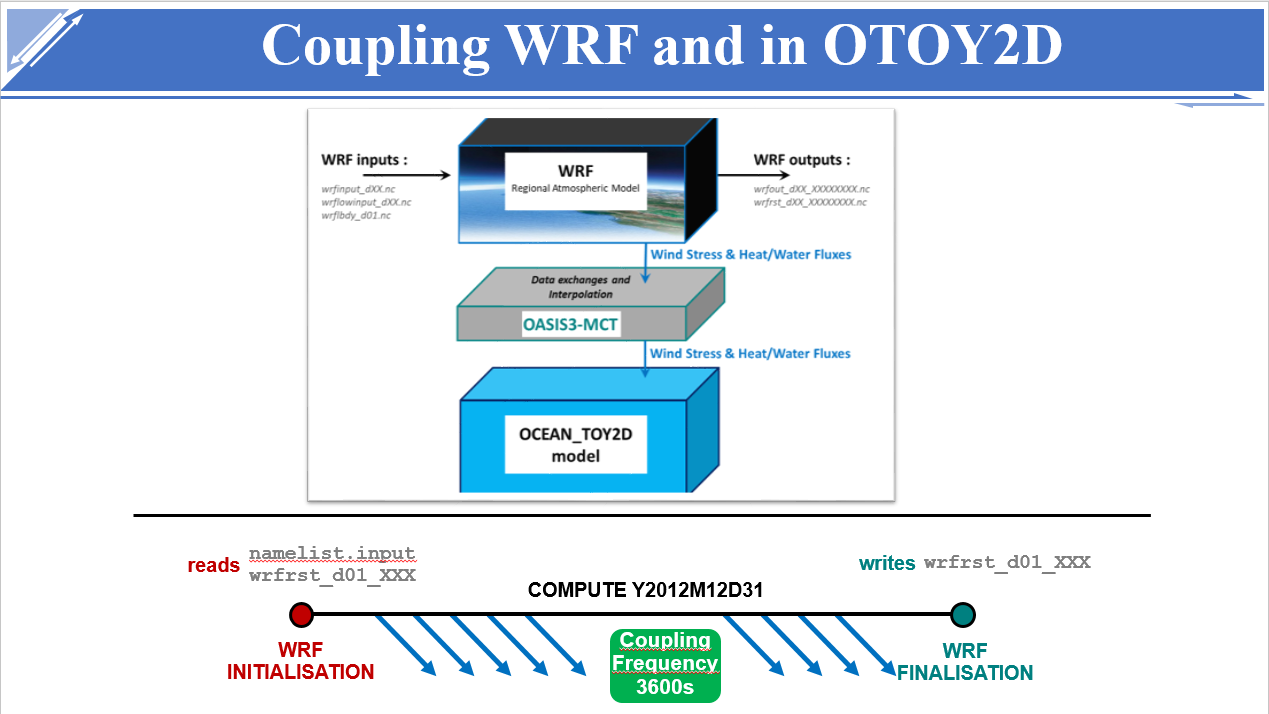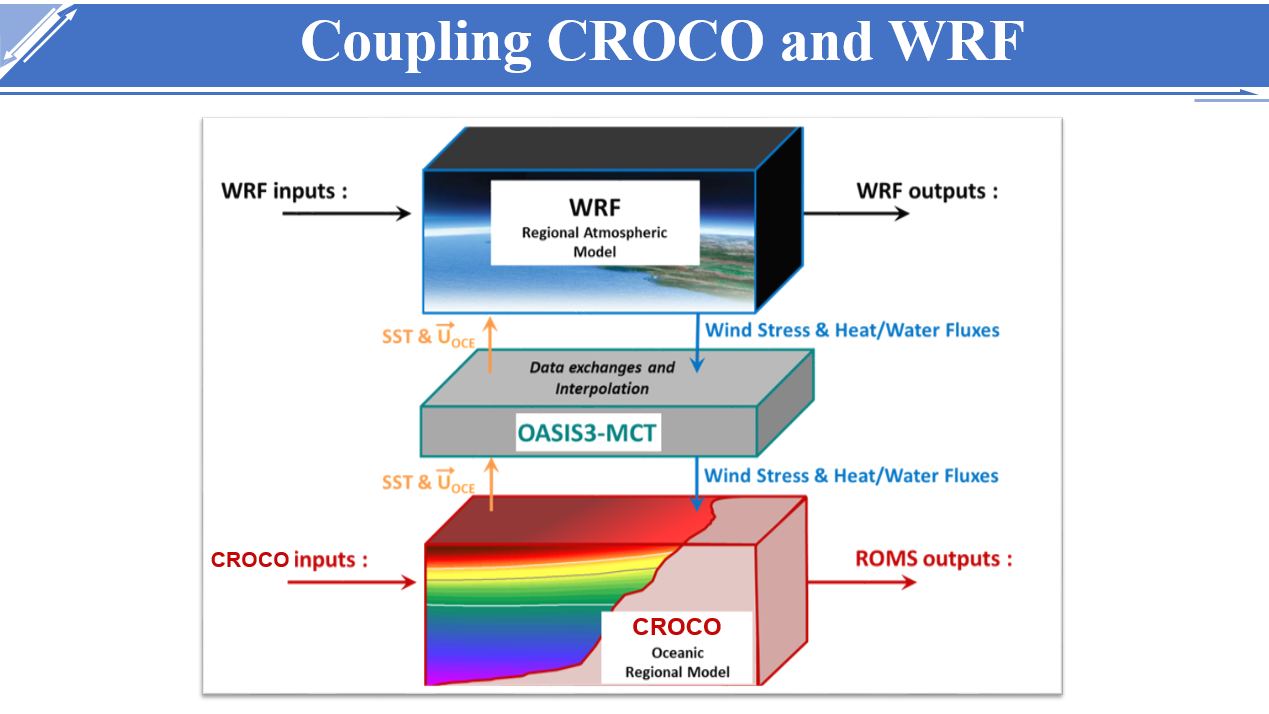Contact Me
Introduction to regional ocean-atmosphere coupled modelisation with the CROCO/WRF/OCASIS-MCT coupled system
 |
This course is part of the GDRI CROCO-Sud Summer school that was held in Cape Town (South Africa) in November/December 2024. It is based on the ROMS-WRF course that I developped in 2018. This advanced course in regional ocean-atmosphere coupling consists primarily of a series of tutorials (hands-on sessions), interspersed with lectures and seminars on air-sea interactions and modeling. It follows all steps to prepare a regional coupled CROCO-WRF configuration, ensuring that each component of the coupled system is explained in detail. |
|
Specifically, the Air-Sea Week is organized around the execution of a set of 5 simulations. The first two simulations are CROCO forced simulations, in a stand-alone mode (day 1) and then coupled to a simple atmospheric TOY model (day 2) that receives CROCO surface fields. Similarly, the next two simulations are WRF forced simulations, and we use an ocean TOY model to send WRF fields (days 3 and 4). The final simulation is a fully coupled CROCO/WRF regional simulation (days 4 and 5). |
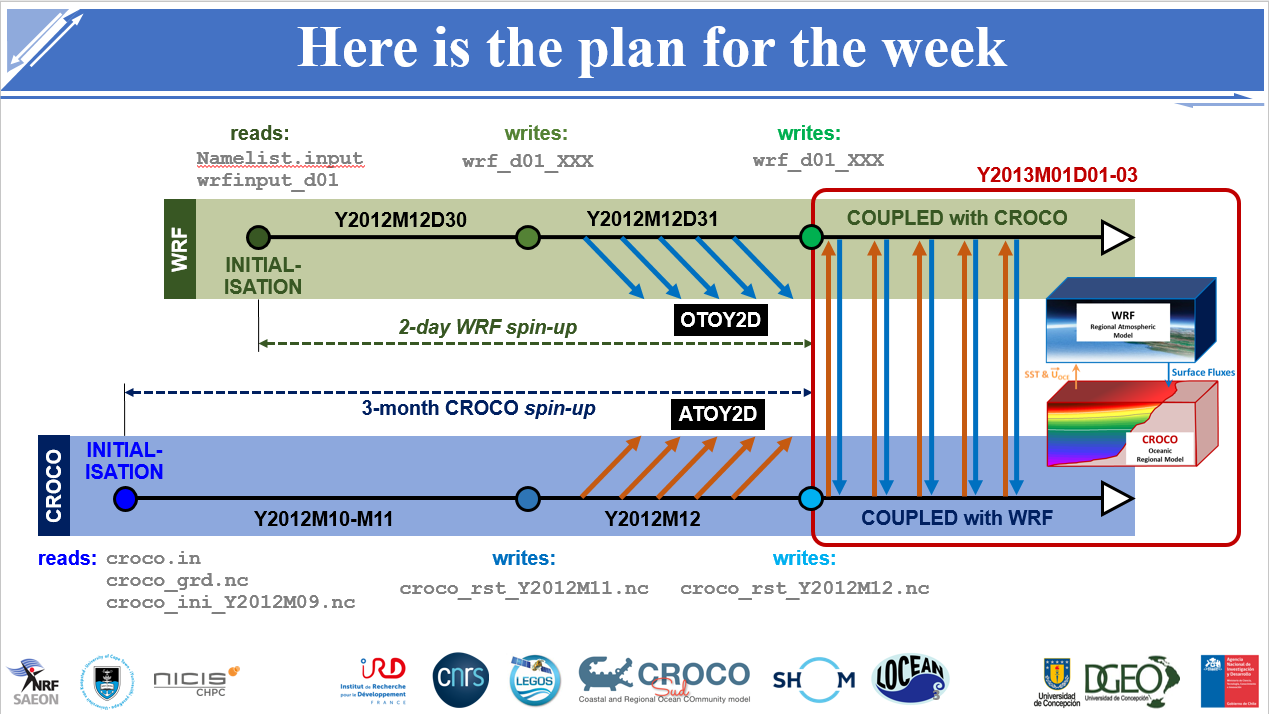 |
This course is designed for researchers, students, working professionals and/or those interested in the use and features of ocean-atmopshere coupled models. It requires familiarity with the CROCO model and the CROCO_Tools, ideally following the CROCO Basic Week course. Basic knowledge in physical oceanography (undergraduate level) and working with computer programming in Matlab/Octave, optionally Python, and knowledge of the Linux operating system are required.
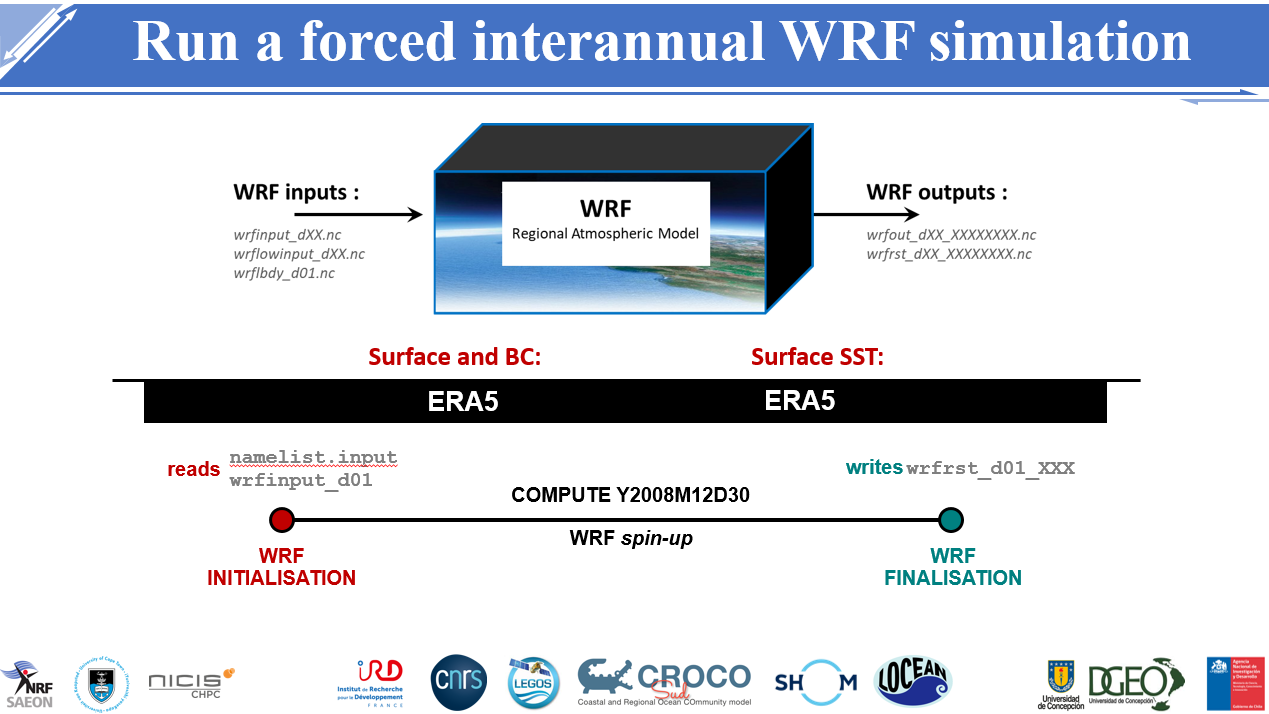 |
Day 3 - 9h30-13h00 - 14h-17h00: WRF DAY |
Day 5 - 9h30-13h00 - 14h-17h00:
- Recap on coupling strategy and overview of available coupling scripts.
- Hands-On session: Finalize your coupled simulation RUN5 (at the end, download all the data and be able to run on another machine)
- Students presentations to get their certificates






